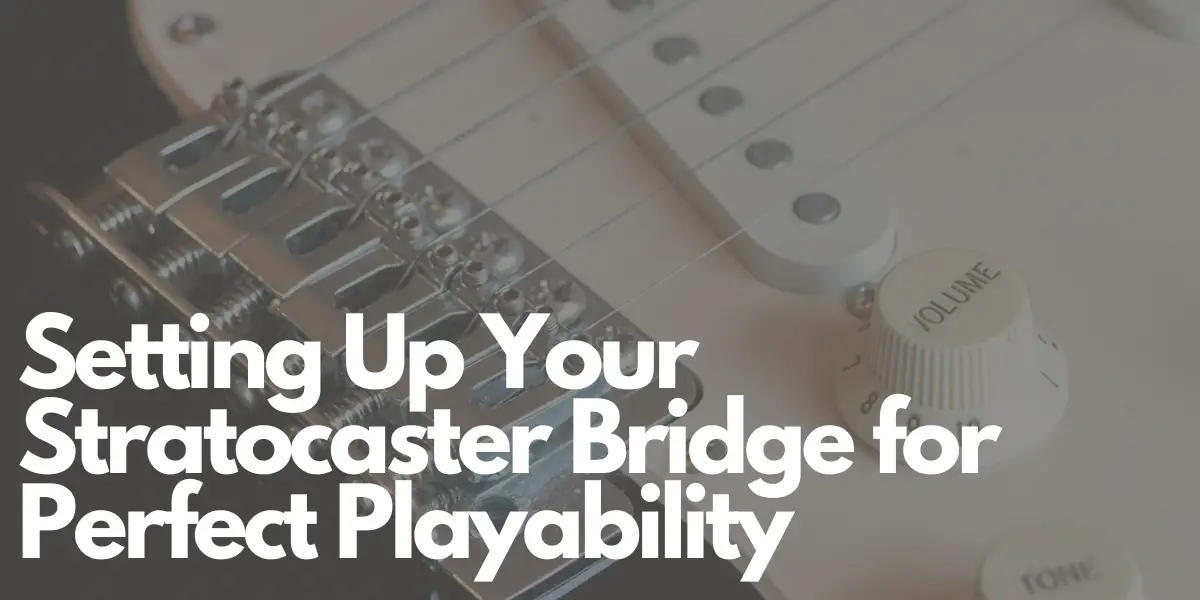The Fender Stratocaster has earned its place as an iconic guitar, known for its timeless design and legendary versatility. As a guitarist, one of the essential tasks to ensure your Stratocaster performs at its best is setting up its bridge correctly. A well-adjusted bridge ensures that your guitar stays in tune, plays comfortably, and delivers a fantastic sound. In this guide, we will walk you through the steps to set up your Stratocaster’s bridge.
Gather Your Tools
Before we dive into the setup process, it’s essential to gather the necessary tools. You’ll need:
- Guitar tuner
- Set of allen wrenches (for saddle height adjustment)
- Screwdriver (for tremolo spring tension)
- Capo
- Guitar strings (optional, for restringing)
With these tools at your disposal, you’ll be well-prepared to tackle the setup of your Stratocaster bridge.
Restring Your Guitar (If Needed)
If your Stratocaster sports old or worn-out strings, it might be a good idea to restring it before proceeding with the setup. Fresh strings can significantly improve playability and intonation, giving your guitar a crisp and vibrant sound.
Adjust Bridge Height
The height of your bridge has a profound impact on your guitar’s action and playability. Here’s how to get it just right:
- Use an allen wrench to adjust the height of each saddle.
- Lowering the saddles reduces string height, making it easier to fret notes.
- Raising the saddles increases string height, which can help reduce fret buzz.
- Aim for an even height across all saddles and strings to ensure a consistent playing experience.
Set Intonation
Intonation is crucial to ensure your guitar plays in tune throughout the entire neck. Follow these steps:
- Tune your guitar to pitch using a tuner.
- Play the open string and then its corresponding fretted note at the 12th fret.
- If the fretted note is sharp (higher in pitch) compared to the open string, lengthen the string by moving the saddle back.
- If the fretted note is flat (lower in pitch) compared to the open string, shorten the string by moving the saddle forward.
- Repeat this process for all strings, making sure each string plays in tune at the 12th fret.
Set Tremolo Spring Tension
If your Stratocaster is equipped with a tremolo bridge, the spring tension affects the balance between the bridge’s movement and your tuning stability. To adjust spring tension:
- Tighten or loosen the screws on the tremolo cavity cover on the back of the guitar.
- Balancing the tension between the springs and the strings is crucial for keeping your guitar in tune when using the tremolo arm.
- Experiment to find the right balance that suits your playing style.
Lubricate Nut and Saddle Slots
To minimize friction and maintain tuning stability, especially when using the tremolo system, apply a small amount of graphite or nut lubricant to the nut and saddle slots. This simple step can make a significant difference in your guitar’s performance.
Fine-Tune with the Tremolo
If your Stratocaster features a floating tremolo system, take the time to practice using the tremolo arm. It adds expressive vibrato and dive-bomb effects to your playing. However, keep in mind that using the tremolo can affect your tuning, so be prepared to retune your guitar accordingly.
Check String Height and Action
Double-check the action of your strings to ensure they are at a comfortable height for your playing style. Adjust the saddle height as needed to achieve your desired action. A comfortable action ensures that playing your Stratocaster is a joyous experience.
Final Tuning and Testing
After making all the necessary adjustments, take the time to tune your guitar to pitch once more. Test it across the neck by playing different chords, scales, and bends. This final step ensures that your Stratocaster feels comfortable and stays in tune, guaranteeing an ideal setup for years to come.
In conclusion, setting up your Stratocaster’s bridge correctly is a vital step in maintaining its playability, intonation, and overall sound quality. Patience is key, so don’t rush the process. Fine-tune your setup until it’s just right for your unique playing style. With your Stratocaster’s bridge perfectly set up, you’ll unlock its full potential and enjoy countless hours of musical bliss.
Author: Mike P
Hi! My name is Mike! I’ve been an apartment producer/musician for 10+ years. I’ve played in punk bands, released EDM tunes on Beatport and iTunes, and have a semi-successful stock music portfolio. Read more…


